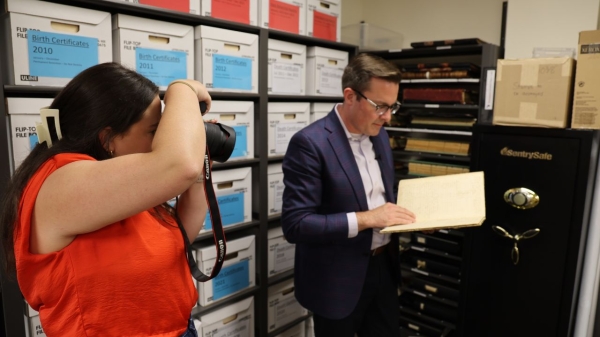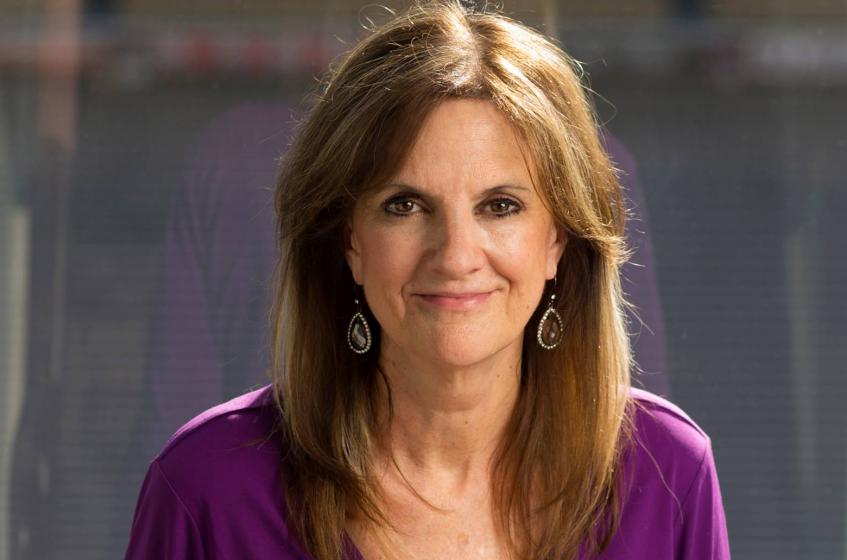What the seismic shifts in sports coverage mean for future of journalism

The playing field for sports journalism is changing.
Sports results have never been more instantaneous or ubiquitous, which is impacting the way newspapers report on them.
Last week, three major newspapers — The New York Times, Los Angeles Times and the San Diego Union-Tribune — announced they are reshaping, redesigning and scaling back their sports coverage, doing away with such staples as box scores, standings and game stories.
Is this a sign of a fundamental industry shift?
ASU News spoke with Paola Boivin, an award-winning sports columnist who worked for The Arizona Republic for more than 20 years. She now teaches at Arizona State University’s Walter Cronkite School of Journalism and Mass Communication.
Boivin, who was inducted into the Arizona Sports Hall of Fame in 2017, talks about these seismic shifts at these iconic newspapers and what it means for sports journalism.
Paola Boivin
Question: Given the events that have unfolded in the past week, what do you think this means for the industry?
Answer: I think it reflects what we always knew: that the industry is evolving. People are consuming news in different ways. The Washington Post, for example, just hired eight people to handle their Instagram accounts. The Instagram posts steer readers to their stories. People still appreciate well-reported stories and strong writing. They just consume them differently and take different paths to find those stories.
Q: With so much sports information on the internet, how does newspaper coverage distinguish itself?
A: The top news organizations still have many of the most highly skilled, trained reporters. Sally Jenkins’ recent piece in the Washington Post on the relationship between Chris Evert and Martina Navratilova was one of the best pieces of journalism I’ve seen in a long time. And several sports sections did unbelievable stories related to the World Cup in Qatar and human rights abuses.
Q: How important is it for students to be skilled as multimedia reporters, as opposed to just writing or specializing in one skill set?
A: The more skills you have as a journalist, the more hirable you become. If you can write, edit video and embrace social media, you have a strong understanding of journalism in 2023. And that’s great.
The moves by The New York Times and Los Angeles Times triggered these odd “sports journalism is dead” posts on social media. I couldn't disagree more. And I can say that with confidence because I see the many jobs my students are landing. If they want to write about sports and culture, they go to Andscape. If they like long-form stories, The Athletic is a popular choice. There are so many options. Students are landing jobs with professional sports teams. They are maintaining athletes’ social media accounts. They are reporting and doing research for investigative news websites. They are writing and reporting for broadcast and streaming Web sites. They're working!
Q: What do you tell prospective Cronkite students as they embark on a career in sports journalism?
A: Be open-minded about opportunities. Be patient. Be fearless. These are the same things I would have told my younger self graduating from college, when the only choices seemed to be newspapers and one sports magazine. Now, the options feel endless.
Top photo courtesy of iStock/Getty Images
More Law, journalism and politics

Native Vote works to ensure the right to vote for Arizona's Native Americans
The Navajo Nation is in a remote area of northeastern Arizona, far away from the hustle of urban life. The 27,400-acre reservation is home to the Canyon de Chelly National Monument and…

New report documents Latinos’ critical roles in AI
According to a new report that traces the important role Latinos are playing in the growth of artificial intelligence technology across the country, Latinos are early adopters of AI.The 2024 Latino…

ASU's Carnegie-Knight News21 project examines the state of American democracy
In the latest project of Carnegie-Knight News21, a national reporting initiative and fellowship headquartered at Arizona State University’s Walter Cronkite School of Journalism and Mass Communication…
